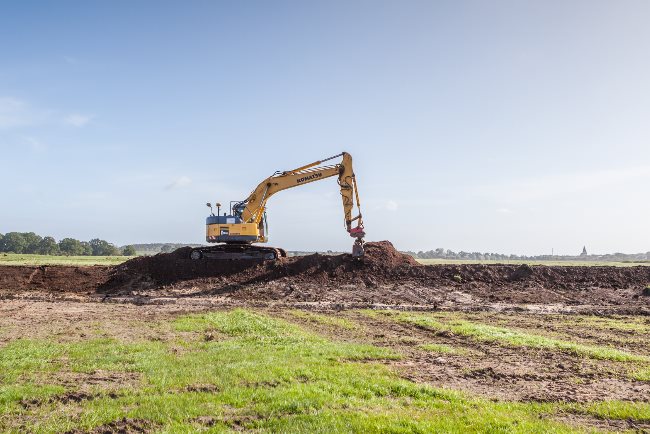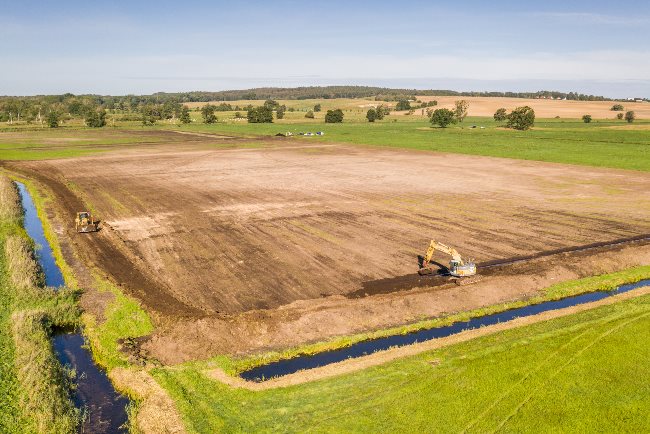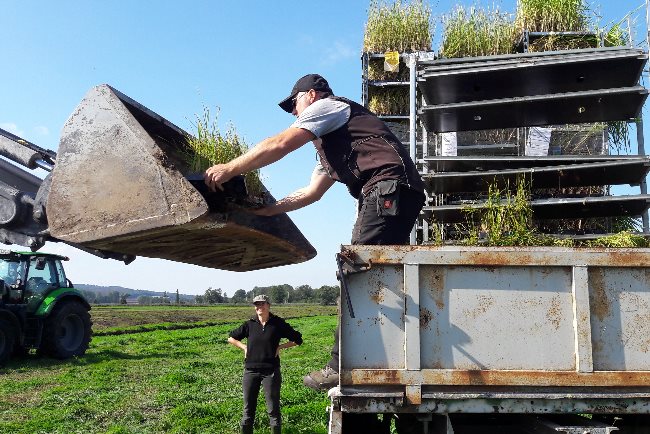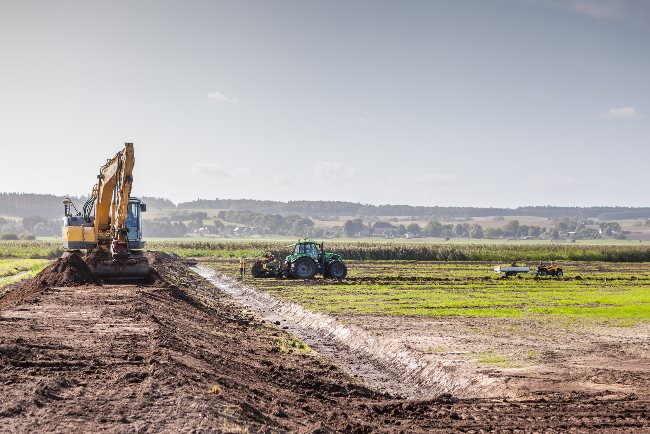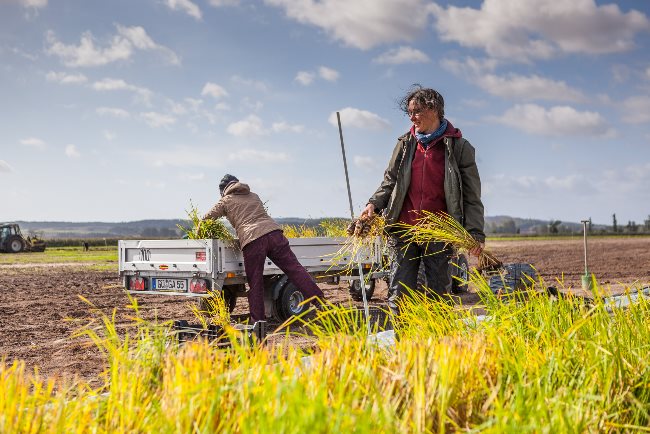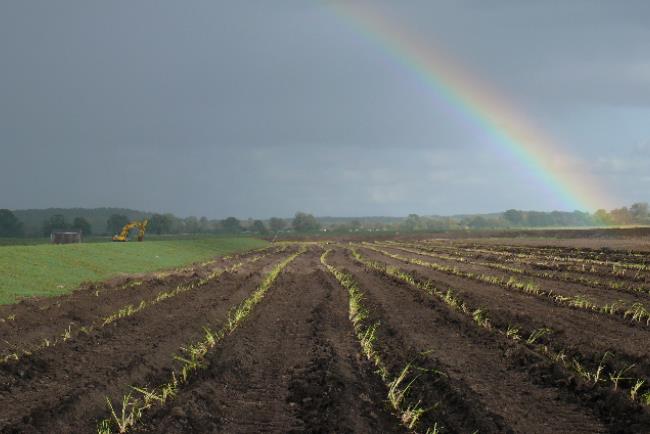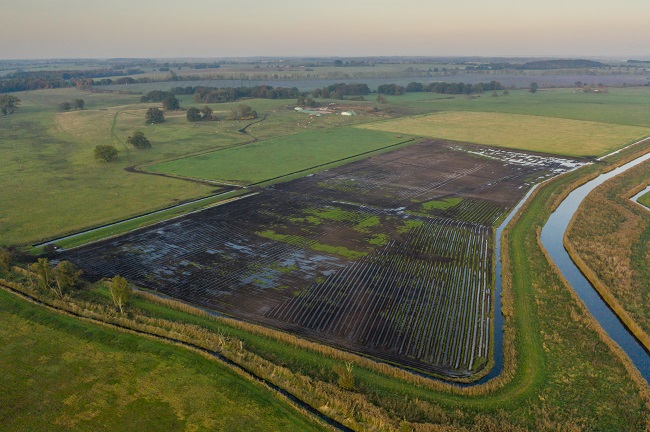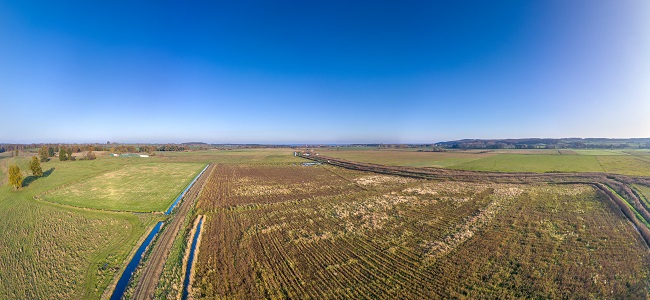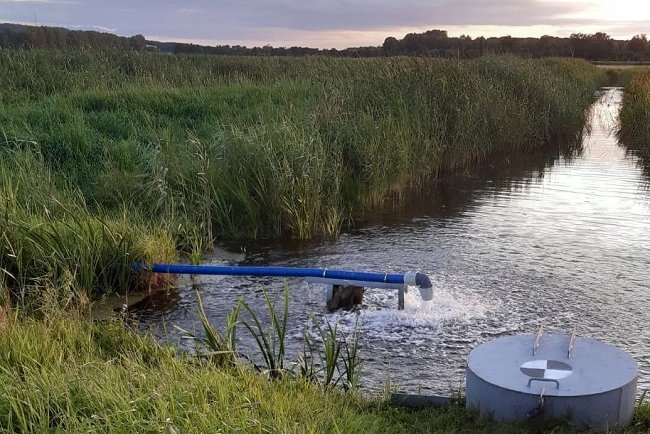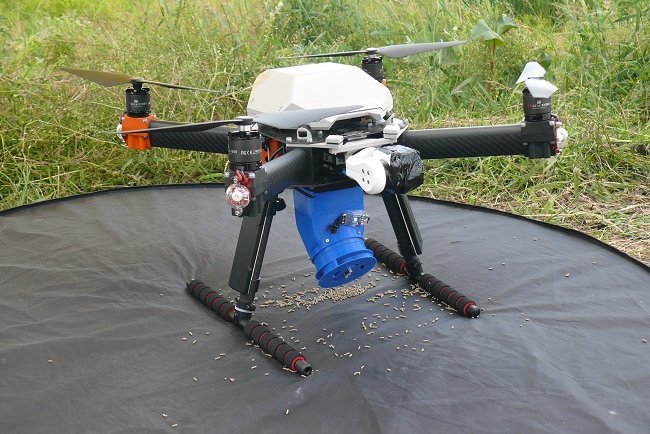Cultivation of Cattail (Typha) – Pilot site ‘Teichweide’, Neukalen
With the pilot site near Neukalen, Mecklenburg-Western Pomerania the cultivation of the cattail species Typha latifolia and Typha angustifolia is tested on a large scale. In cooperation with partners site preparation, plant breeding, mechanical planting, management and harvesting have been and are beeing implemented. In addition, comprehensive monitoring is carried out, in particular on stand establishment and development, biomass yield and quality, water balance and water quality, nutrient balance, biodiversity and greenhouse gas (GHG) emissions.
The establishment of the Typha site on approx. ~10 ha of fen grassland was carried out by the Project Paludi-PRIMA (2019-2022) and was a milestone for the implementation of paludiculture. Valuable experience was gained on planning and approval processes, site preparation and planting. Management, harvesting and monitoring of the cattail area are currently being continued and intensified by the Paludi-PROGRESS project (2022-2025). The pilot site is also available for further trials and investigations with cooperation partners. For example, the PRINCESS project has included cattail cultivation in comparative studies with other rewetted fen sites (vegetation, breeding birds, dragonflies, beetles, spiders; GHG measurements, biomass production and decomposition). Finally, the cattail site is an important paludiculture demonstration area for interested visitors.
General information on the cultivation of cattail can be found here (German).
Site conditions and land use
The pilot site is located in the river valley of the Teterower Peene and part of the polder "Teichweide". The fen peatland has a peat layer of up 5 m thickness and is drained for agriculture. The grassland vegetation of the polder Teichweide is dominated by reed canary grass (Phalaris arundinacea), grazed by suckler cows and mown for winter fodder production. The owner (farming enterprise Voigt) has made a section of the polder available for the cultivation trial since 2019.
Site establishment
In August and September 2019, construction work was carried out to prepare the area (~10 ha) for rising water levels. The measures included the construction of dykes/ bunds to retain water, the excavation of a new ditch around the field to collect seepage water and thus prevent the surrounding grassland from becoming waterlogged, the construction of an irrigation infrastructure (pump + inlet) and the installation of two adjustabel outlets to regulate the water level.
A nursery specialised in aquatic plants has raised 25,000 seedlings each of Typha latifolia and Typha angustifolia. These were delivered in mid-September 2019 and planted using two tractor-drawn planting machines from the forestry industry. The two Typha species were each planted in two densities: 1 plant per m² and 0.5 plants per m² (planting scheme 2m x 0.5 m and 2m x 1 m). In June 2020, pellets (Typha seeds + clay) were sown by hand and by drone on a shallow overflown area.
Management
The management of the Typha site includes water level regulation through active irrigation in spring/ summer using water from the adjacent Teterower Peene, protection against geese and wild boar as well as mowing of the dykes.
Monitoring
By investigating stand establishment, nutrient uptake, water balance, biomass quality, and cost data, the pilot site will provide practical information on technical implementation, plant growth, and economics of cattail cultivation. Monitoring of the 10 ha area over several years also offers unique opportunities to quantify the ecosystem services of paludiculture (climate impact, water and nutrient balance, biodiversity).
Findings
As the 10-hectare cattail trial was set up as a "wet island in a drained environment", it was relatively complex to set up. In addition, active irrigation means that water management requires intensive care. Economies of scale and the selection of sites with free inflow significantly reduce costs. The late planting in September 2019 with low planting density initially led to low establishment of the Typha young plants, so that a significantly earlier planting date in summer is recommended. Stolon formation and additional germination in spring/summer 2020 nevertheless enabled good establishment. Seed production and sowing are being investigated as a promising, more cost-effective establishment method for cattail. There is a lack of locally available harvesting technology for peatlands, which means that contractors are hired on a supra-regional basis. As a result, harvest planning cannot react flexibly to uncertainties such as short-term changes of weather conditions. In addition, the long transportation routes result in higher shipping costs. The formation of fruit stands (cobs) has a significant influence on the biomass quality and its suitability for various utilisation options.










